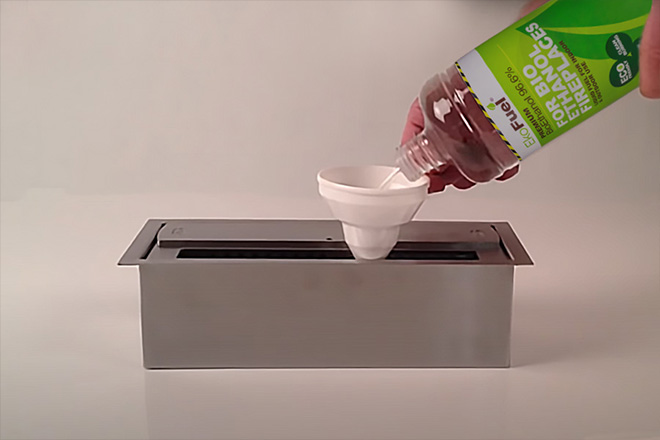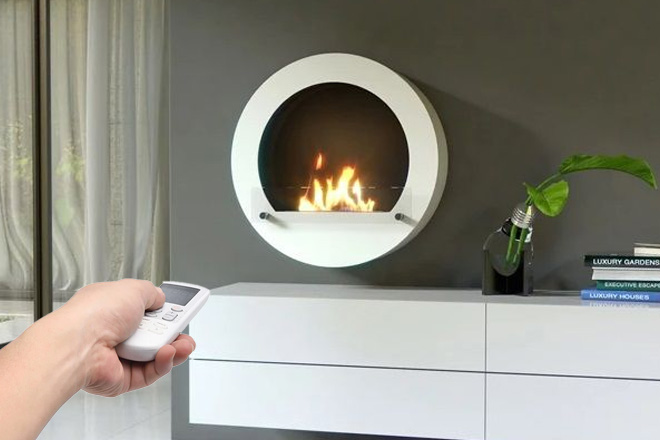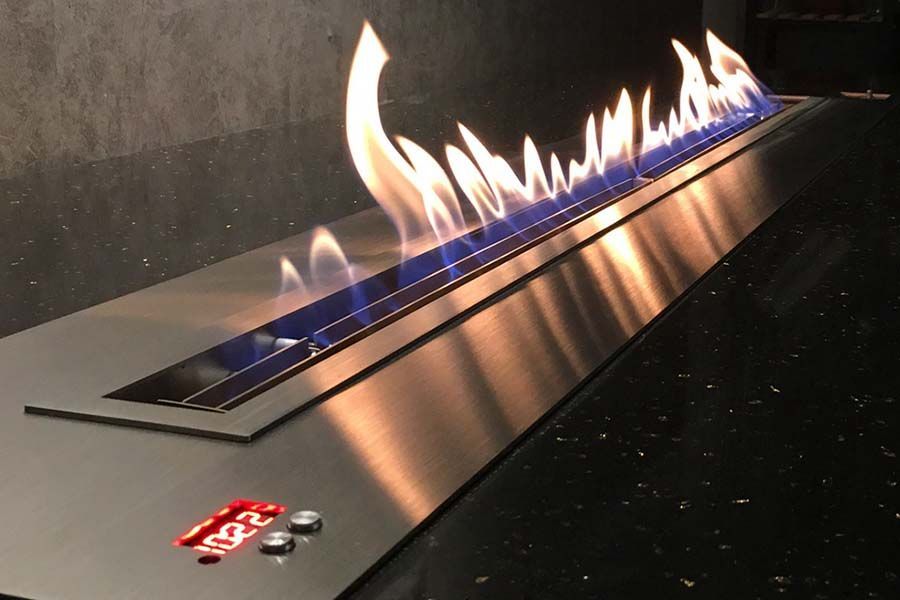Choosing the perfect bio ethanol fireplace from the wide array of models and burner types available can be quite daunting. However, understanding the differences between a manual bioethanol fireplace and an automatic bioethanol fireplace can help you make an informed decision.
The key contrasts lie in their operation and control mechanisms. A manual bio ethanol fireplace requires manual intervention for fuel filling, ignition, flame control, and extinguishing, with the user personally monitoring the process. On the other hand, an automatic bioethanol fireplace incorporates electronic controls, such as pumped fuel filling, automatic ignition, adjustable flame intensity and electronic extinguishing options, providing convenience and added safety features. Let's delve deeper into their distinctions to help you make the right choice for your needs.
Manual Bioethanol Fireplace
A manual bio ethanol fireplace requires manual intervention to operate and control the flame. Here are some key characteristics:
- Bioethanol Fuel Filling. Bio ethanol fuel is manually poured into the fuel tank. The bio ethanol fuel tank is generally located within the burner but in some high end models can mounted away from the burning area. The bio ethanol fuel can either be poured directly into the burning slot or a fill hole mounted away from the burning area, dependant on the model
- Ignition: The user manually ignites the fire using a long lighter or matchstick
- Flame Control: The flame intensity and size are manually adjusted using a control mechanism, such as a lever to open or close the burning slot. This allows the user to increase or decrease the heat output and flame height
- Extinguishing the Flame: When the user wants to extinguish the flame, they need to manually snuff it out by covering it or using a tool provided with the bio ethanol fireplace, such as a metal lid or by closing the plate mounted above the burning area
- Monitoring: The user must personally monitor the bio ethanol fireplace during operation to ensure safety and compliance with instructions provided by the manufacturer
- Bio ethanol Fuel Refilling- The user must wait a predetermined time stipulated in the fireplace user manual for the bioethanol fire to cool down before refilling. This period ensures that when refilling the fire, it is performed safely

Now that we've explored the characteristics of a manual bio ethanol fireplace, let's turn our attention to the automatic bioethanol fireplace.
Automatic Bioethanol Fireplace
There is a growing number of automatic bioethanol fireplaces being introduced as bioethanol fires grow in popularity. These bio ethanol burners incorporate electronic controls and automation for ease of operation. Here are some key characteristics:
- Fuel Filling: Bio ethanol fuel is either manually poured into the fuel tank located within the burner or on some models the bio ethanol fuel is pumped from the bioethanol fuel container into the burner fuel tank. In other models a 5lt plastic bioethanol fuel container is placed within a cabinet in the bioethanol fireplace and a pump is attached to it, to draw the bio ethanol fuel off as required.
- Ignition. In the models, the bioethanol fireplace is equipped with an automatic ignition system. It may include a push-button or remote control that electronically initiates the ignition process.
- Flame Control: The flame intensity and size can be adjusted electronically using controls such as buttons, touchscreens, or remote controls. This allows the user to customize the heat output and flame height. This is safer than manually closing the burner slot, which is the method of flame control with manual bioethanol fireplaces.
- Extinguishing the Flame: Automatic fireplaces typically have a built-in safety feature that allows the user to electronically extinguish the flame by pressing a designated button or using a remote control command. Again, this is safer than extinguishing a manual bioethanol fire.
- Monitoring: Automatic bio ethanol fireplaces often include safety sensors and mechanisms to monitor factors like fuel levels, oxygen levels, and overheating. Some models may have automatic shutdown features in case of safety hazards or malfunctions.
- Bio ethanol Fuel Refilling: The automatic bioethanol fireplace monitors the burner environment and will only allow the user to refill the bio ethanol fireplace when it is safe to do so, thereby removing the biggest risk of operating a bioethanol fireplace, which is the refilling process.

Overall, the main distinction between manual and automatic bioethanol fireplaces lies in the level of control, convenience and safety features they offer. Manual bio ethanol fireplaces require more hands-on operation and monitoring, and careful attention while automatic bioethanol fireplaces provide electronic controls and safety features for easier and more convenient use.
At present, automatic bio ethanol fireplaces tend to be more expensive than their manual counterparts. As the awareness of bio ethanol fires grows and their popularity increases, we will find that automatic bioethanol fireplaces become more common place and their price will reduce.
Given the choice, we would advise purchasing an automatic over a manual bio ethanol fireplace. Take the time to visit a number of bioethanol fireplace retailers see how the fireplaces operate and review how the points we discuss above are addressed by each product.



